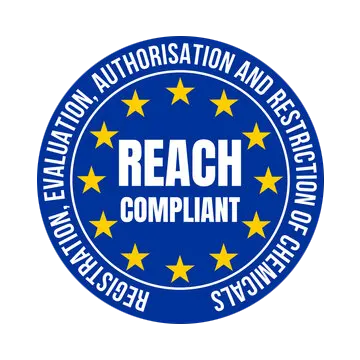What is REACH?
REACH stands for Registration, Evaluation, Authorization and Restriction of Chemicals.
European Union regulation (Regulation 1907/2006) enforced on June 1, 2007, controls chemical use in Europe. Aims to ensure high protection against chemical risks. Finished products require testing and compliance declaration before market.
Due to extensive research, the European Chemicals Agency (ECHA), headquartered in Helsinki, Finland, had documented 30,000 substances and their associated risks by May 1, 2018, encompassing all industries.
What are the objectives of the REACH regulation?
When the European REACH regulation was introduced, the Member States set a number of objectives: Improve the protection of human health and the environment from chemicals. To increase the safety of workers in the handling of chemical substances. To increase the competitiveness of the industry. To establish identical and transparent information on the nature and risks of substances, from the supplier to the final customer. In the field of fashion jewelry, REACH aims to limit the use of nickel and heavy metals such as lead, cadmium and mercury (Annex XVII of the REACH regulation):
Lead: the concentration of lead must be equal to or less than 0.05% by weight, i.e. 500 mg/kg (500 ppm parts per thousand), in articles of jewelry and costume jewelry, as well as in hair accessories (bracelets, necklaces, rings, piercings, wristwatches and bracelets, brooches, cufflinks) and in the materials from which jewelry is made.
In large quantities, lead can have neurotoxic effects on development, as well as cardiovascular and renal effects when absorbed by the body.
Cadmium: The cadmium concentration must be less than or equal to 0.01% by weight, i.e. 100 mg/kg (100 ppm part per thousand), for metal beads and all components used in the manufacture of jewelry, as well as metal parts of jewelry and jewelry accessories, such as parts of jewelry and hair accessories (bracelets, necklaces, rings, pierced jewelry, watches and bracelets, brooches, cufflinks) and the materials from which jewelry is made.
Cadmium is known to cause cancer, kidney damage and bone fragility in case of prolonged exposure.
Nickel: according to European Directive 94/27/EC, the level of nickel in direct and prolonged contact with the skin must be less than 0.5 µg per square centimeter per week (0.5µg/cm²/week) or 0.2 µg per square centimeter per week (0.2µg/cm²/week) for any stem assembly that enters the body. This applies to earrings, necklaces, bracelets, chains, anklets, rings, watch cases, bracelets and clasps, riveted buttons, riveted buckles, zippers and metal tags when used in clothing).
In large quantities, nickel causes allergies when in prolonged contact with the skin.
Who is subject to REACH?
This European regulation affects all companies in the European Union that manufacture, import, use or sell articles that may have harmful effects on health or the environment. This includes manufacturers, importers and suppliers of articles, wholesalers, distributors and downstream users.
Renaroque has scrupulously complied with this regulation since its foundation.


